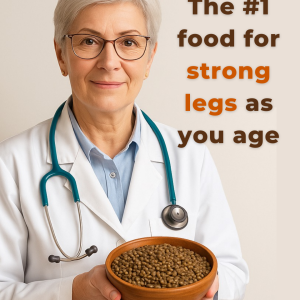
Blood clots are part of the body’s natural defense system, sealing off injuries to stop bleeding. But sometimes, clots form without any injury—and that’s where the problems begin.
Picture your circulatory system like a busy highway. A deep vein thrombosis (DVT) is like a sudden traffic jam in that system, usually forming in the legs or arms. It blocks blood flow and can even break loose, potentially traveling to the lungs and becoming a pulmonary embolism, a life-threatening condition.
“Clots in the deeper veins can be dangerous because they interfere with circulation and may even break loose,” warns Dr. Luis Navarro, vascular specialist and founder of the Vein Treatment Center in New York.
The challenge? Many clots don’t announce themselves with obvious symptoms. Spotting subtle warning signs can make a crucial difference.

Warning Signs You Shouldn’t Ignore
Sudden Limb Swelling
If one leg or arm swells quickly for no clear reason, it could be a sign of DVT. “When a clot forms in a deep vein, it can obstruct blood flow, causing fluid to collect,” explains Dr. Navarro.
Persistent Cramping or Aching
Pain from a clot is often mistaken for a muscle strain or cramp. But unlike soreness from exercise, this discomfort tends to get worse when walking or flexing the foot.
Red or Warm Skin
If the skin turns red and feels warm, especially near the pain or swelling, it could be inflammation caused by a clot. “This type of redness tends to persist and may feel warm,” says Dr. Navarro.

When the Clot Reaches the Lungs
If a clot becomes a pulmonary embolism, symptoms become more serious:
Sharp Chest Pain
Unlike heart attack pain, which often radiates outward, pain from a pulmonary embolism is sudden, stabbing, and worsens with deep breaths. “Pulmonary embolisms and heart attacks can feel similar,” notes Dr. Navarro, “but there are key differences.”
Unexplained Cough
A dry, persistent cough—especially if it comes with chest pain or difficulty breathing—can signal a clot in the lungs. “People may even cough up mucus or blood,” says Dr. Navarro.
Rapid Heartbeat
When oxygen levels drop, the heart races to make up for it. Dr. Lewis Nelson of Rutgers explains that a fast heartbeat might be the body’s response to reduced oxygen, pain, or anxiety caused by the clot.
Dizziness or Fainting
Feeling faint can happen for many reasons, but when paired with chest pain or trouble breathing, it becomes a red flag. One study in the New England Journal of Medicine found that nearly 17% of older adults hospitalized for fainting had undiagnosed pulmonary embolisms.

Who’s Most at Risk?
Certain people are more likely to develop blood clots. These include:
- Those who are immobile for long periods (like during flights or hospital stays)
- People recovering from surgery or injuries, especially to the legs
- Individuals with inherited clotting disorders
- Pregnant women or those on birth control pills
- People with chronic conditions like cancer, obesity, or heart disease
- Smokers
Understanding your risk can help you take preventive steps, like staying hydrated, wearing compression socks on long flights, or moving regularly.
When to Act Fast
If you’re experiencing symptoms like swelling, redness, chest pain, or difficulty breathing, don’t wait. Seek medical help right away. Clots can be treated with medication or surgery—but timing is critical.
The bottom line: trust your body. If something feels wrong and doesn’t go away, it’s worth getting checked. That quick action could save your life.




